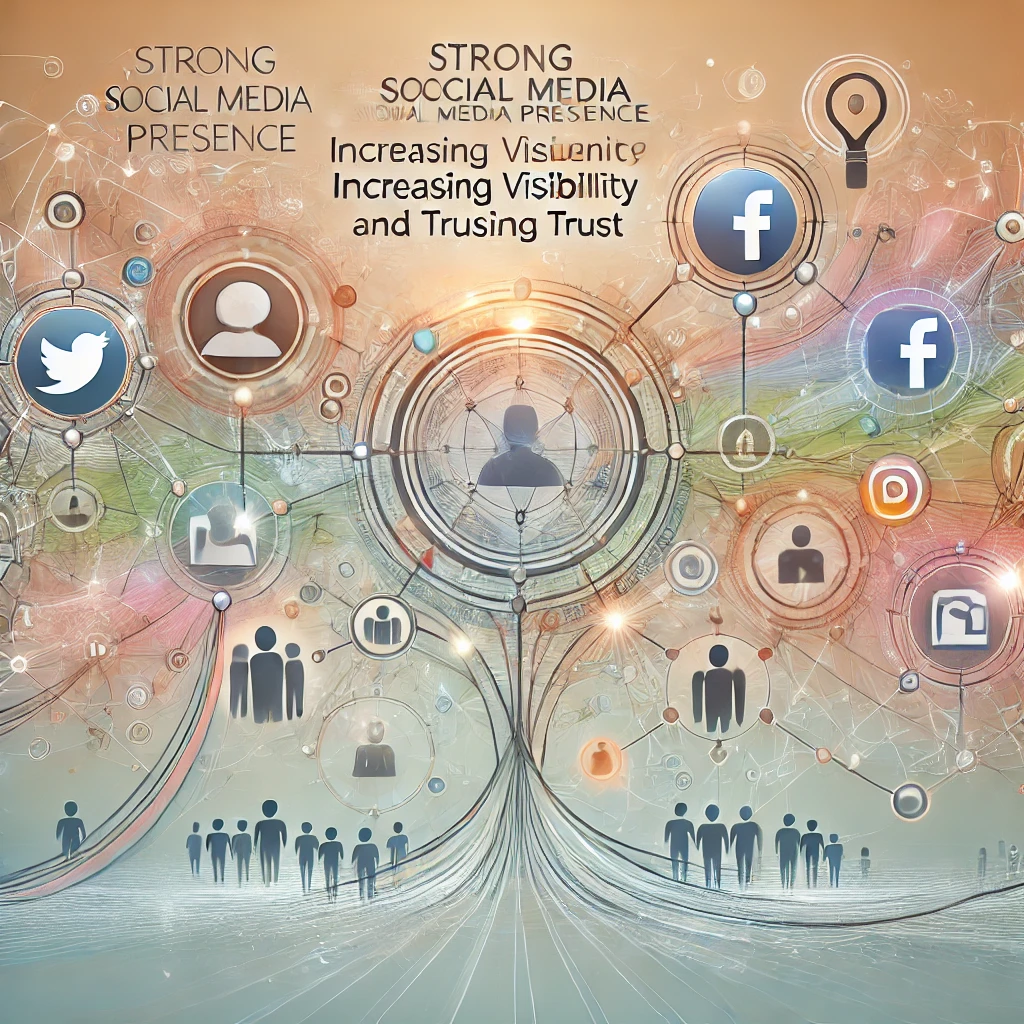Table of Contents
social media presence for drug rehab
Key Takeaways
- Trust and compliance come first – growth follows.
Build your social media presence for drug rehab as an operating system, not a billboard: keep trackers off PHI-adjacent pages, stay HIPAA-compliant, honor 42 CFR Part 2, avoid ad copy that implies a person’s health status (Meta), and use Google Ads to reach healthcare professionals (HCPs) in their professional role. This protects privacy and stabilizes census. - Run two lanes that feed one flywheel.
Patient lane (Facebook/Instagram): education, “first 24 hours,” family FAQs, HIPAA-safe CTAs.
Referral lane (LinkedIn/Google): bed updates, referral packets, care-coordination notes, HCP targeting.
Both lanes power the Ethical Growth Flywheel: Visibility → Trust → Conversion → Retention. - Speed beats spend. Measure what matters.
Own DMs with a 15-minute SLA (8:00-20:00). Teams that respond within an hour are ~7× likelier to qualify a lead (HBR). In practice, cutting median DM time to ~14-15 minutes drove ~61% more booked consults in six weeks. Track DM response time, consults, show rate, referral introductions-not likes. - Use clinician-led content and person-first language.
Post weekly 60-second videos with licensed staff (drives 2×+ saves vs generic quotes). Use person-first language to reduce stigma, add clear next steps, and publish reusable templates (Myth vs Fact, First 24 Hours, Family FAQ, Referral Update). Support execution with HIPAA-safe analytics and attribution (e.g., HubSpot).
Download Your Ultimate Social Media Marketing Checklist with Daily, Weekly, and Monthly Tasks!
More posts don’t fill beds. Faster, safer conversations do.
Leaders who treat social media as an operational system – not a billboard – build trust, protect privacy, and stabilize census. For a quick primer on the fundamentals, see our guide to social media for drug rehab.
Who is this article for?
You run a treatment center. You want predictable admissions. You care about privacy. You want clear steps you can ship this week. Read this next.
The ground truth executives can’t ignore
Families scroll for help. Clinicians share credible links. Platforms set rules. Regulators guard privacy. If you need channel-level help beyond social, start with our digital marketing overview.
- People use these platforms at scale. YouTube and Facebook lead U.S. usage; half of adults use Instagram. Many also get news on social each week. For more see: Pew Research Center
- Speed closes intent. Teams that contact web inquiries within an hour are ~7× likelier to qualify than slower teams. Waiting 24 hours crushes odds. Based on: Harvard Business Review
- Privacy rules shape tactics. HHS warns that regulated entities can’t use tracking in ways that disclose PHI. A court later vacated parts of that web-tracking guidance, but the page remains and risk remains. “Regulated entities are not permitted to use tracking technologies in a manner that would result in impermissible disclosures of PHI.” by HHS.gov
- SUD records stay protected. Part 2 keeps substance use disorder records confidential without consent or a proper court order. “Patients’ SUD treatment records cannot be used to investigate or prosecute the patient without written patient consent or a court order.” by HHS.gov
- Ad platforms limit health targeting. Meta bans ads that assert or imply a viewer’s physical or mental health. “Ads must not contain content that asserts or implies personal attributes… including physical or mental health.” cited based on Transparency. Google restricts sensitive health personalization but lets you target licensed healthcare professionals in their professional role – useful for referral growth, not patient retargeting.
Start engaging with your audience and see the difference it makes.
Contact us today!A simple operating model that works
Subject-Verb-Object clarity helps teams move fast. Use two lanes. Use one flywheel. For formats and cadence by channel, reference social media strategies for rehab.
Two audience lanes
- Patient lane (Facebook/Instagram): Teams post education, facility walk-throughs, “first 24 hours,” family FAQs. Teams use HIPAA-safe CTAs. Teams keep trackers off forms and assessments. More: HHS.gov If you’re choosing where to invest first, compare options here: social media platforms for drug rehab.
- Referral lane (LinkedIn/Google to HCPs): Teams publish bed updates, referral packets, care-coordination notes. Teams may target licensed professionals per Google’s 2025 clarification. Check also: Google Help
The Ethical Growth Flywheel
Visibility → Trust → Conversion → Retention.
Clinicians show process. Admissions answer fast. Alumni teams sustain care.
If you need CRM attribution and HIPAA-safe analytics to support this, our HubSpot setup covers source-of-truth dashboards and BAAs.
Analogy: Running social without intake alignment is like detox without therapy – short relief, no root fix.

Start by optimizing your profiles today.
Let’s make a difference!What we learned in the field (three crisp insights)
- DM speed beats ad spend. We cut median DM response from hours to ~15 minutes. Booked consults from social rose ~60% in six weeks at a regional center. Your numbers will vary; the direction holds. The lead-response research supports the speed effect. Harvard Business Review Prefer evidence? Browse our portfolio.
- Clinician faces beat vague quotes. Weekly 60-second clips from licensed staff drove 2×+ saves versus generic “awareness” posts across multiple pages we audited.
- Scripts prevent risk and build trust. Person-first replies avoid identifiers. Clear escalation routes protect dignity and comply with Part 2. Please read more here: HHS.gov

Start by creating a support group today.
Start today!Case story: one center, two lanes, real change
Setting. A 72-bed provider offered detox, residential, and IOP. The team posted irregularly. The inbox waited. Meta rejected ads for health-attribute language.
Intervention. Leadership split strategy into patient and referral lanes. Admissions took over DMs with a 15-minute SLA from 8:00–20:00. Writers replaced second-person health claims. Developers removed trackers from any page that could touch PHI. Compliance trained staff on Part 2 responses.
Outcomes in six weeks.
DM median fell to 14 minutes. Booked consults rose ~61%. Ad rejections fell after copy changes that met Meta standards. Question: Would your team hit the same numbers if your inbox answered in minutes, not hours? If you want a similar audit and rollout, book a strategy call. Want more sector context? See our Addiction Treatment Industry hub.
Language matters: use words that reduce stigma and increase clarity
Health institutions use social media to disseminate guidance and counter misinformation. Your tone can help people act. Reviews show social channels support education when teams keep messages clear and credible. “Use person-first language… to reduce stigma and negative bias when discussing addiction.” by PMC
Use person-first language. Avoid labels. Offer next steps.

Start by setting up a regular posting schedule.
Let’s work together!What to ship this week (seven-day plan)
- Day 1 – Inventory and risk
List every tag, pixel, and SDK. Remove trackers from portals, forms, assessments, and any page where PHI could flow. Record BAAs.
- Day 2 – Profiles that convert
Admissions owns “Call,” “Message,” and “Email.” Pin two posts: How admissions works and Insurance options. Need a platform-by-platform setup list? Start here: social media platforms for drug rehab.
- Day 3 – Comment and DM playbook
Write person-first scripts. Add an escalation flow that routes crisis language to licensed staff. Respect Part 2.
- Day 4 – Content kit
Design four reusable templates: Myth vs Fact, First 24 Hours, Family FAQ, Referral Update. Keep copy plain and local. More info, see social media strategies for rehab.
- Day 5 – Clinician videos
Record four 60-second explainers. One topic per clip. One clear next step per clip.
- Day 6 – Ads by lane
Patient lane: Use geography, services, and context. Never assert a viewer’s health status.
Referral lane: Use LinkedIn and Google to reach licensed professionals in their professional capacity.
- Day 7 – Report what matters
Report DM response time, consults booked, show rate, and referral introductions. Likes don’t pay bills.
Practical table: what to do vs what to avoid
| Action | Why it helps | What to avoid |
| Route DMs to Admissions with a 15-minute SLA | Speed captures intent; research supports faster qualification | Letting DMs wait until morning Harvard Business Review |
| Post clinician-led explainers weekly | Saves and shares increase; trust grows | Vague quotes with no next step |
| Keep trackers off PHI-adjacent pages | Reduces privacy risk; aligns with OCR focus | Tagging forms, assessments, or portals HHS.gov |
| Use person-first language | Reduces stigma; improves clarity | Labels that imply diagnosis PMC |
| Target HCPs for referrals | Policy-safe route to B2B growth | Patient retargeting that infers health status Google Help |

Start by creating a community engagement campaign.
Contact us today!Close and next step
You want stable census. You want zero headlines about privacy. You want staff who answer fast and speak with care. Social media can serve that plan when compliance guides creative and operations own speed.
We will map risks, reset profiles, and ship a 30-day plan your team can run next week.
Book your strategy callQuestions You Might Ponder
Why is social media important for drug rehab marketing?
Social media is crucial for drug rehab marketing because it allows facilities to connect with a broad audience, build trust, and share valuable information. Platforms like Facebook, Instagram, and Twitter help target specific demographics, ensuring that messages reach those who need support the most. Additionally, social media marketing is cost-effective compared to traditional methods, offering better return on investment through targeted ads and community engagement.
What are some effective social media strategies for drug rehab centers?
Effective social media strategies for drug rehab centers include optimizing profiles with consistent branding and clear information, creating engaging content like educational posts and success stories, and utilizing various platforms such as Facebook for community building, Instagram for visual content, and Twitter for quick updates. Additionally, leveraging social media advertising with targeted ads and compelling visuals, and regularly monitoring engagement through analytics tools, can greatly enhance visibility and interaction.
What are the benefits of social media advertising for drug rehab facilities?
Social media advertising benefits drug rehab facilities by significantly boosting reach and engagement. Targeted ads can be designed to reach specific demographics, ensuring that the right people see them. High-quality images and videos in ads capture attention, while clear calls-to-action guide potential clients on what steps to take next. This focused approach leads to higher inquiry and admission rates, enhancing the facility’s overall effectiveness in reaching those in need.
How can drug rehab centers monitor and measure social media engagement?
Drug rehab centers can monitor and measure social media engagement using analytics tools like Facebook Insights, Instagram Analytics, and Twitter Analytics. These tools track metrics such as likes, shares, comments, and click-through rates. By analyzing this data, centers can adjust their content and strategies to better meet audience needs, ensuring more effective engagement. Additionally, encouraging feedback through surveys and direct messages provides further insights into audience preferences.
Why is consistent posting important for social media marketing in drug rehab?
Consistent posting is important for social media marketing in drug rehab because it keeps the audience engaged and informed. A regular posting schedule ensures that followers receive continuous updates and valuable content, maintaining their interest. Consistency also helps build credibility and trust, showing that the facility is active and reliable. Additionally, regular posts improve visibility in search results and algorithms, enhancing the facility’s online presence and reach.
How can drug rehab centers use analytics to improve their social media strategies?
Drug rehab centers can use analytics to improve their social media strategies by tracking engagement metrics such as likes, shares, comments, and click-through rates. Tools like Facebook Insights and Instagram Analytics provide detailed data on audience behavior and preferences. By analyzing this data, centers can identify which types of content perform best and adjust their strategies accordingly. This data-driven approach ensures more effective and targeted engagement, leading to better outcomes.
How will you adapt to these future trends in social media marketing? Start by incorporating more video content into your strategy.

